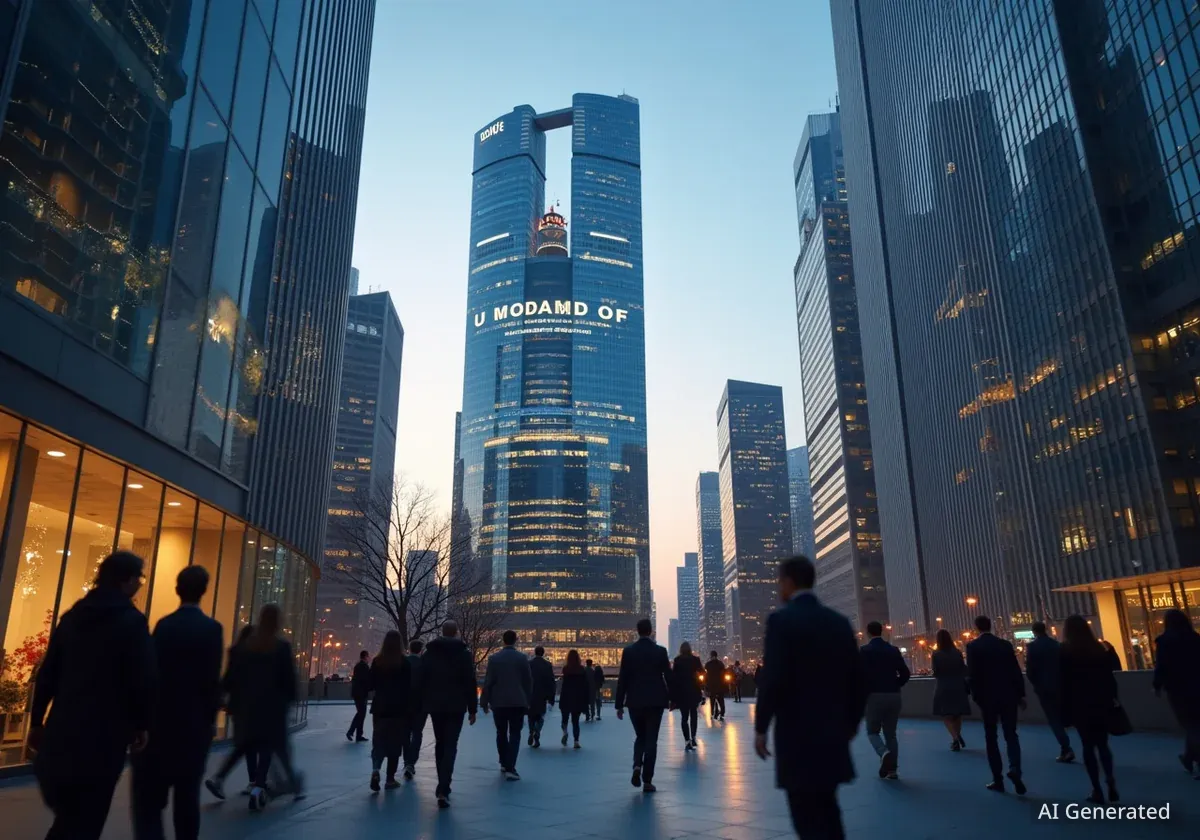As China prepares its 15th five-year plan, a foundational document for its economic future, foreign investors are encountering a significant change in attitude from local officials. The country is moving away from a broad-based welcome for all investment and is now selectively targeting high-value projects in strategic sectors, signaling a major policy shift from quantity to quality.
This new approach means that the era of open-door incentives for any foreign company is drawing to a close. Instead, China is prioritizing investments that can enhance its domestic supply chains and advance its technological capabilities in key areas like artificial intelligence and healthcare.
Key Takeaways
- China is drafting its 15th five-year plan, which will guide economic policy from 2026 to 2030.
- The government's focus is shifting from the volume of foreign investment to its quality and strategic value.
- Officials are now prioritizing investments in specific high-tech sectors like pharmaceuticals, healthcare, and artificial intelligence (AI).
- The new goal is to attract foreign companies that can strengthen and complete local supply chains.
A New Era for Foreign Investment
For decades, China's five-year plans have served as the central blueprints for its national development. These documents outline the government's top priorities, setting the direction for everything from industrial policy to infrastructure spending. As the country drafts its 15th plan, a new directive is becoming clear: a strategic pivot in how it views foreign capital.
Historically, local governments across China competed to attract foreign investment of any kind, often offering generous tax breaks and other incentives. This strategy was successful in fueling rapid economic growth. However, the landscape is now changing as Beijing aims for a more self-reliant and technologically advanced economy.
The emerging consensus is a move from "quantity to quality." This means that simply bringing capital and jobs is no longer enough. Foreign companies are now being evaluated based on their ability to contribute to China's long-term strategic objectives.
The View from the Ground
This policy change is not just a high-level directive; it is being actively implemented by local officials. Sun Xueguang, who serves as the president of a Franco-Chinese start-up incubator, has witnessed this transformation firsthand. He has spent years facilitating investment deals in China and is accustomed to the warm reception foreign investors typically receive.
However, during a recent meeting with officials in the prosperous Yangtze River Delta region, Sun noted a distinct change in tone. The discussions were no longer about general incentives but about specific, stringent requirements for potential projects.
"The message was clear: they want high-quality foreign investment that can help complete and develop their local supply chain," Sun explained. "The mentality is shifting from quantity to quality."
This experience highlights the practical application of the new policy. Local cadres, who once welcomed nearly any foreign enterprise, are now acting as gatekeepers, filtering for investments that align with national priorities.
What Are Five-Year Plans?
China's five-year plans are comprehensive policy documents that have guided its economic and social development since the 1950s. They establish broad goals and define key areas for growth and reform, influencing government spending, regulatory changes, and industrial development across the country for a five-year period.
Strategic Sectors in Focus
The new selectivity is not random. Chinese officials have been explicit about the types of industries they want to attract. According to Sun's observations, the focus is squarely on high-technology and strategic sectors. These include:
- Pharmaceuticals: Building a robust domestic drug development and manufacturing capability.
- Healthcare: Advancing medical technology and services for its large population.
- Artificial Intelligence (AI): Seeking leadership in a technology considered crucial for future economic competitiveness.
By targeting these areas, Beijing aims to fill gaps in its domestic industrial ecosystem. The goal is not just to attract foreign companies but to integrate their technology and expertise into local supply chains, making them more resilient and advanced. This strategy is part of a broader push for technological self-sufficiency amid ongoing geopolitical tensions.
Economic Powerhouse: The Yangtze River Delta
The Yangtze River Delta, centered around Shanghai, is one of China's most economically vital regions. It accounts for nearly a quarter of the country's GDP and is a major hub for finance, technology, and manufacturing, making it a key area for implementing new economic policies.
Implications for Global Companies
This strategic shift presents both challenges and opportunities for foreign investors. For companies operating in the prioritized sectors—such as advanced manufacturing, biotech, or AI—China's new focus could lead to significant opportunities and government support.
These firms may find local governments eager to partner with them, provided their projects align with the goal of strengthening domestic capabilities. Collaboration, technology transfer, and integration with local partners will likely be key to securing approval and support.
Conversely, businesses in more traditional or lower-tech sectors may find it increasingly difficult to enter or expand in the Chinese market. The preferential policies and red-carpet treatment of the past are likely to be reserved for a select group of companies that fit into China's strategic vision.
As the 15th five-year plan takes shape, foreign investors will need to adapt their strategies. Understanding and aligning with China's national priorities will be more critical than ever for successful engagement with the world's second-largest economy.





